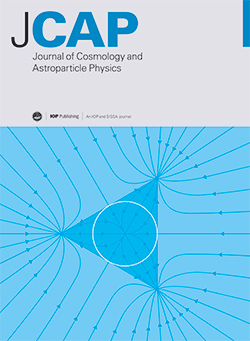Cosmological gravity on all scales. Part IV. 3× 2 pt Fisher forecasts for pixelised phenomenological modified gravity
IF 5.3
2区 物理与天体物理
Q1 ASTRONOMY & ASTROPHYSICS
Journal of Cosmology and Astroparticle Physics
Pub Date : 2025-02-27
DOI:10.1088/1475-7516/2025/02/071
引用次数: 0
Abstract
Stage-IV large scale structure surveys are promising probes of gravity on cosmological scales. Due to the vast model-space in the modified gravity literature, model-independent parameterisations represent useful and scalable ways to test extensions of ΛCDM. In this work we use a recently validated approach of computing the non-linear 3 × 2 pt observables in modified gravity models with a time-varying effective gravitational constant μ and a gravitational slip η that is binned in redshift to produce Fisher forecasts for an LSST Y10-like survey. We also include in our modelling an effective nulling scheme for weak-lensing by applying the Bernardeau-Nishimichi-Taruya (BNT) transformation that localises the weak-lensing kernel enabling well-informed scale cuts. We show that the combination of improved non-linear modelling and better control of the scales that are modelled/cut yields high precision constraints on the cosmological and modified gravity parameters. We find that 4 redshift bins for μ of width corresponding to equal incremental ΛCDM growth is optimal given the state-of-the-art modelling and show how the BNT transformation can be used to mitigate the impact of small-scale systematic effects, such as baryonic feedback.求助全文
约1分钟内获得全文
求助全文
来源期刊

Journal of Cosmology and Astroparticle Physics
地学天文-天文与天体物理
CiteScore
10.20
自引率
23.40%
发文量
632
审稿时长
1 months
期刊介绍:
Journal of Cosmology and Astroparticle Physics (JCAP) encompasses theoretical, observational and experimental areas as well as computation and simulation. The journal covers the latest developments in the theory of all fundamental interactions and their cosmological implications (e.g. M-theory and cosmology, brane cosmology). JCAP''s coverage also includes topics such as formation, dynamics and clustering of galaxies, pre-galactic star formation, x-ray astronomy, radio astronomy, gravitational lensing, active galactic nuclei, intergalactic and interstellar matter.
 求助内容:
求助内容: 应助结果提醒方式:
应助结果提醒方式:


